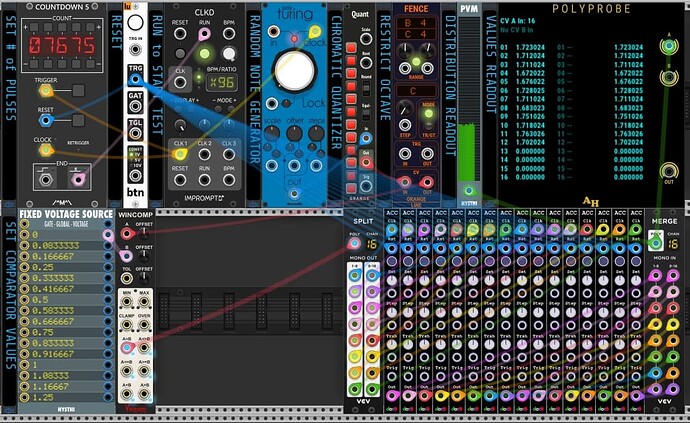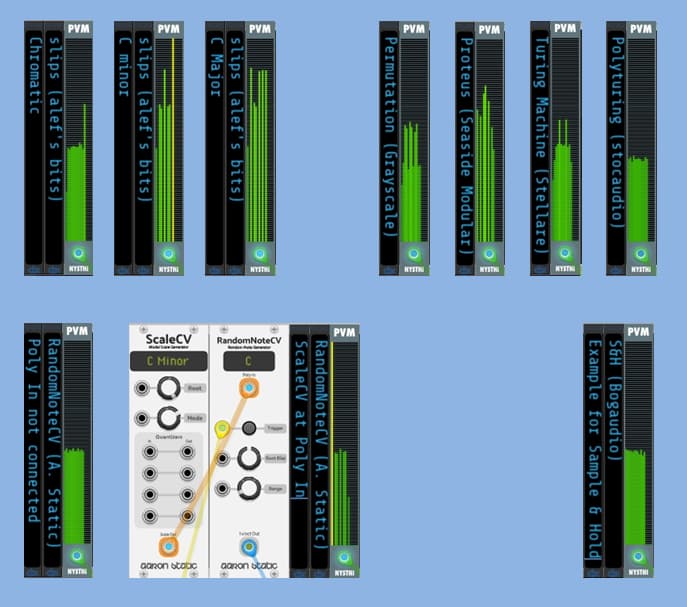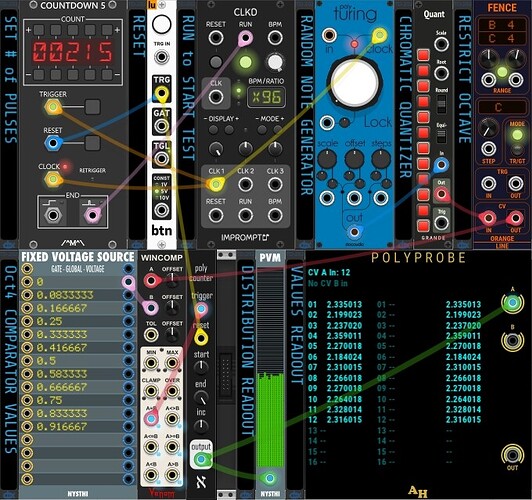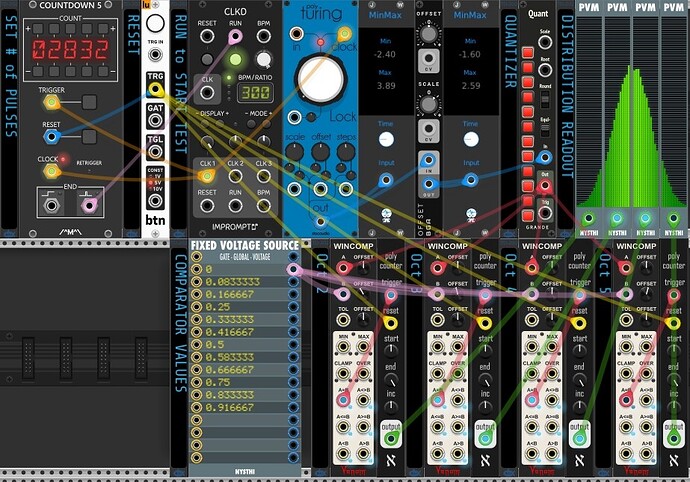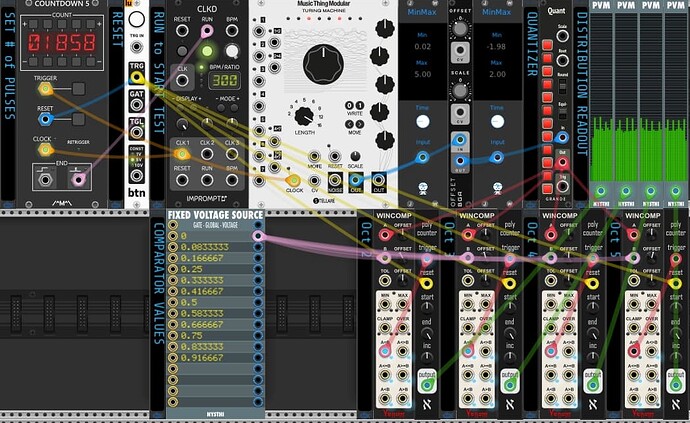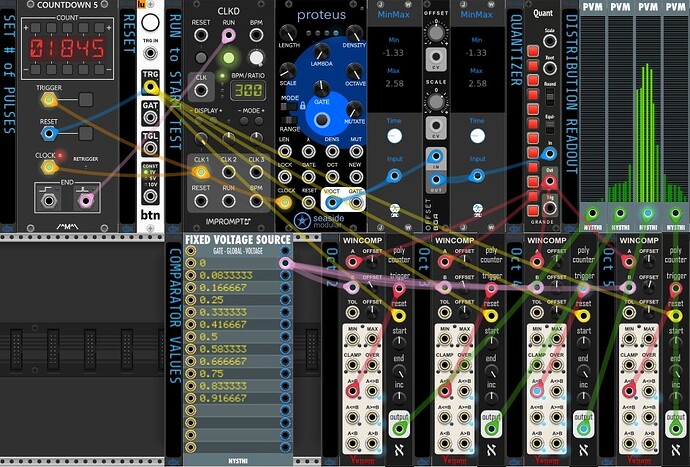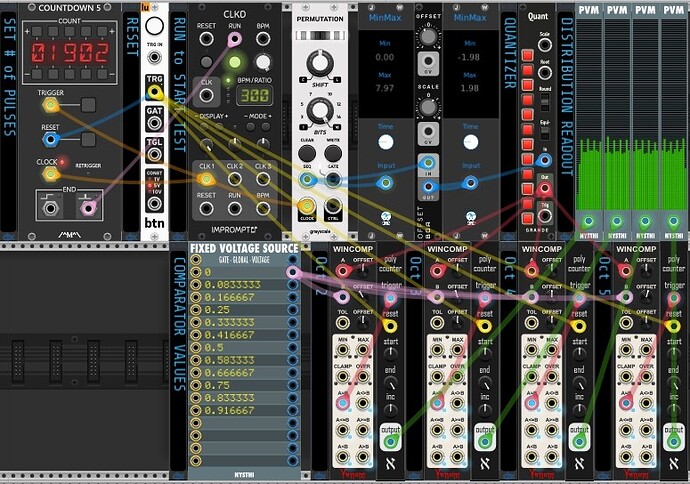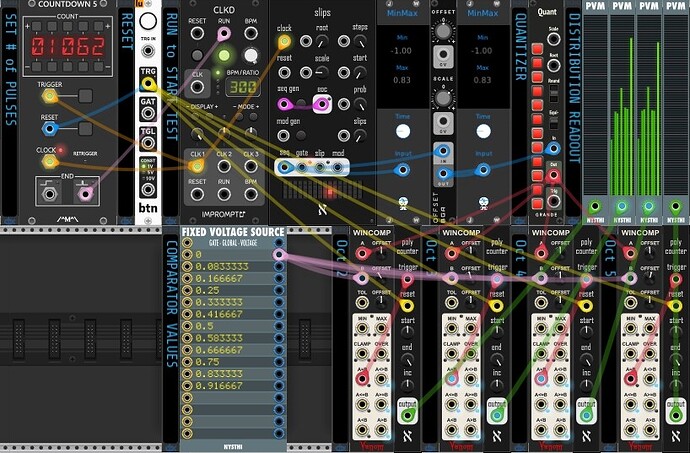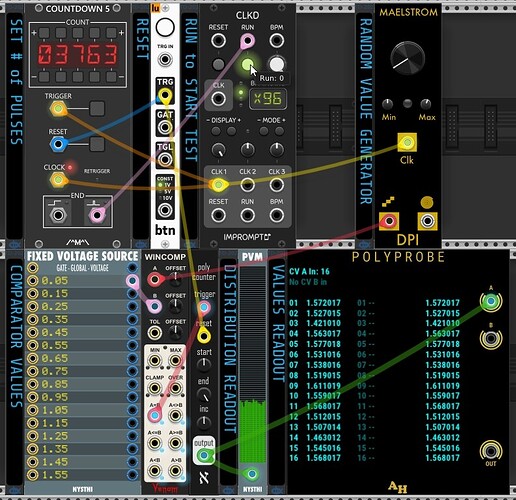Expanding on the testing of pitch quantizers, I also looked at the distribution of random note/sequence generators. Here, distribution was assessed after 30,000 pulses.
Tool for testing distribution of random note generators_20250111.vcvs (51.6 KB)
Some of the interesting RESULTS included (see pic):
Polyturing (stocaudio) showed an even distribution across a chromatic scale.
In contrast, Turing Machine (Stellare Modular) showed emphases on E and G#, strongly diminished values at C, and slight reductions at C# and B.
Permutation (6hp) by Grayscale, another Turing-like module, showed emphasis on D, D#, F, F#, G# and A, with a clearly diminished C.
slips (alef’s bits) in chromatic mode favored the 12th note (B) and undervalued the first note (C) by approx. the same amount.
In addition, slips in C minor scale showed a strongly increased Subtonic (7th scale degree). The Subdominant (4th scale degree) was somewhat enhanced, and the Tonic (1st scale degree) was reduced.
Moreover, slips in C Major scale showed a major decrease of the Tonic, and less reduction in Mediant (3rd scale degree) and Subdominant.
Changing the root note in slips lead to additional variations.
With Proteus (Seaside Modular) in C minor as well as C Major mode, the Submediant (6th scale degree) and Subtonic seemed to be undervalued, whereas Mediant, Subdominant and Dominant (5th scale degree) were enhanced. As Proteus was created to generate melodies rather than random note sequences, it is not clear whether the observed uneven distribution was intended.
In chromatic mode, Proteus was close to an even distribution (data not shown).
RandomNoteCV (Aaron Static) yielded an even chromatic distribution, but only if the Poly In input was not connected. In contrast, when a signal was fed into Poly In, distribution vastly exaggerated the first note. This was observed when Fixed Voltage Source (NYSTHI) was connected, and also with ScaleCV (Aaron Static). It is not clear whether I misunderstood or this being a bug, @AaronStatic.
All noise-based S&H modules tested [S&H (Bogaudio), S&H 8 (ML Modules), S&H (Bark), SHEight (Mockba Modular) and tagh (Instruo)] yielded an even distribution on a chromatic basis.
